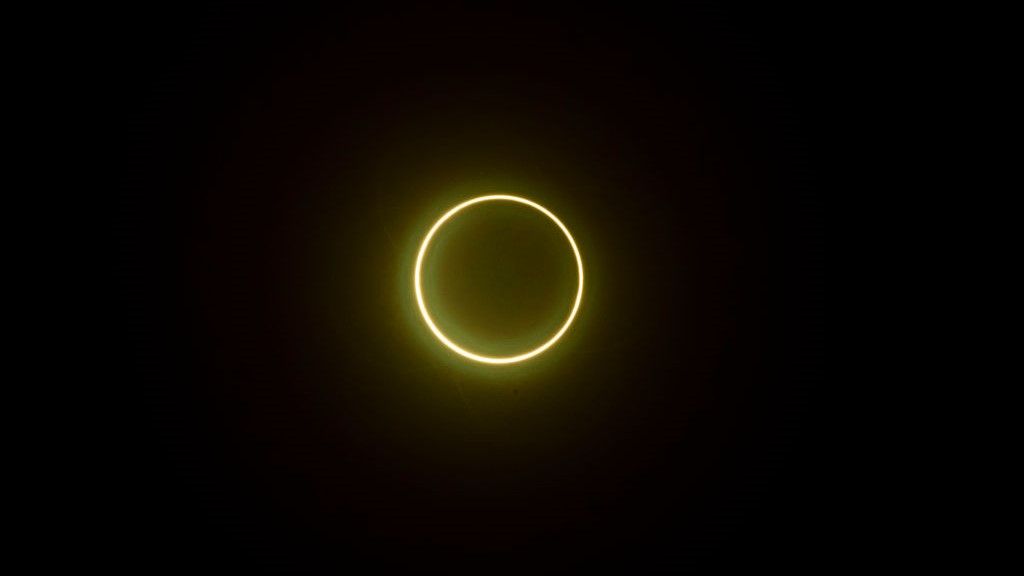All solar eclipses will be "rings of fire" in the distant future. Here's why [View all]
By Joe Rao published about 3 hours ago
The mean distance of the moon to the Earth is increasing at the rate of 1.5 inches (about 3.8 cm) each year. Here's what that means for solar eclipses.

a ring of fire solar eclipse
Annular solar eclipse seen from Chiayi in southern Taiwan on June 21th, 2020. (Image credit: Alberto Buzzola/LightRocket via Getty Images)
On Saturday, Oct. 14th, nearly one billion people across much of North and South America will be able to watch as the new moon orbits between the sun and Earth to create a most interesting celestial occurrence: An eclipse of the sun.
This eclipse is an annular, one in which a ring of sunlight is viewed around the moon's image at midpoint in the spectacle. However, for much of the United States it will be seen only as a partial eclipse.
In an annular eclipse the sun is never completely hidden (as in a total eclipse) because on Oct. 14, the moon will be 4.5 days past apogee – that point in its orbit where it is farthest from Earth. The new moon on eclipse day will be 246,707 miles (397,037 km) away. As a consequence, the tip of its dark umbral shadow cone fails to make contact with the Earth by nearly 12,000 miles. So, like a penny placed atop a nickel, the disk of the moon will appear too small to completely cover the sun. The magnitude, or fraction of the sun's width that the moon covers, means that 4.8 percent of that width shows all around.
From the moment the eclipse path begins over the North Pacific Ocean, it slides on a southeast trajectory, arriving at the coast of Oregon at 9:15 a.m. Pacific Daylight Time. For the next 46 minutes, the annular phase will be visible from parts of nine states running from Oregon to Texas; the width of the shadow path averages 127 miles (204 km).
More:
https://www.space.com/solar-eclipses-all-ring-shaped-future
